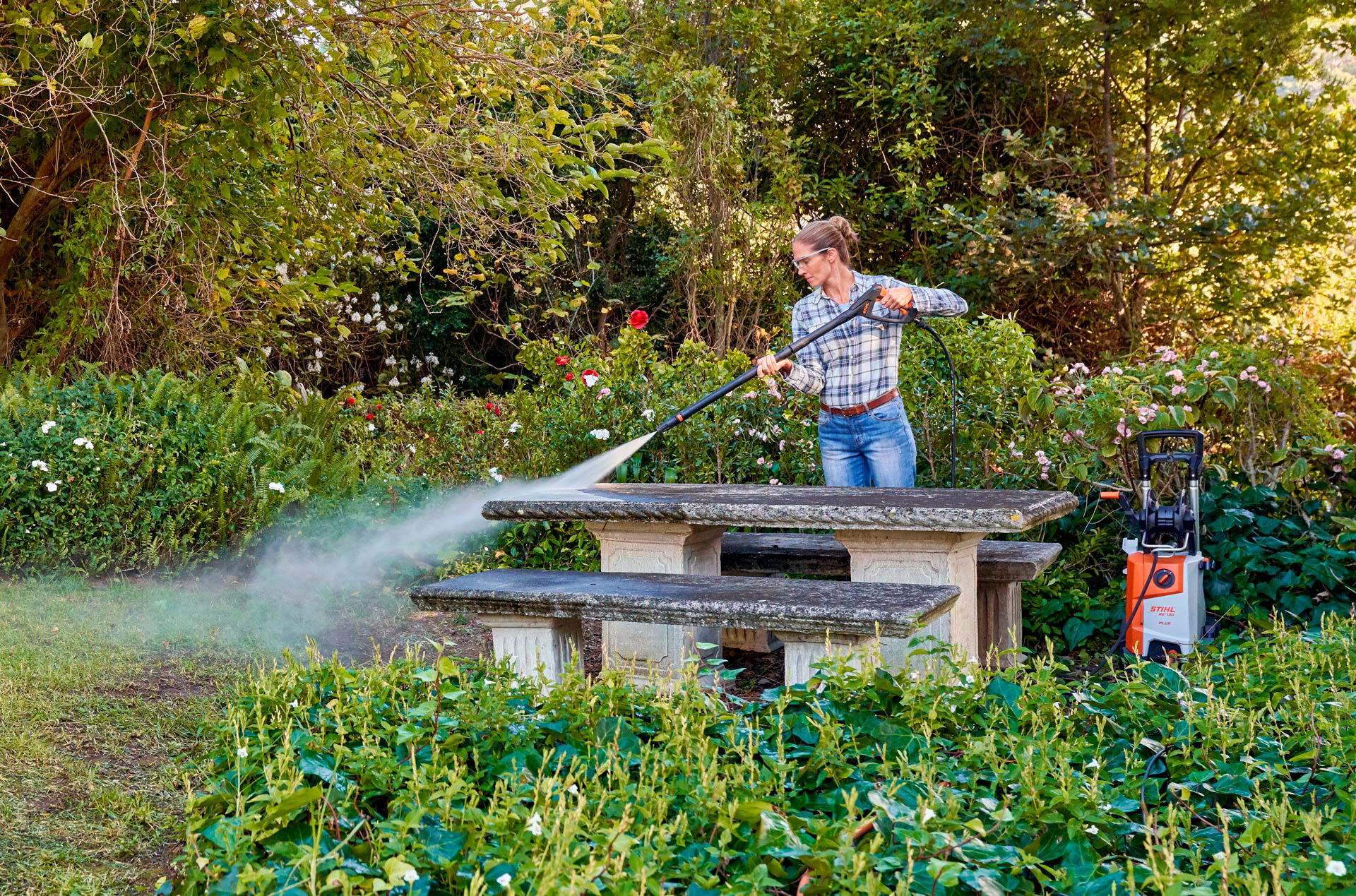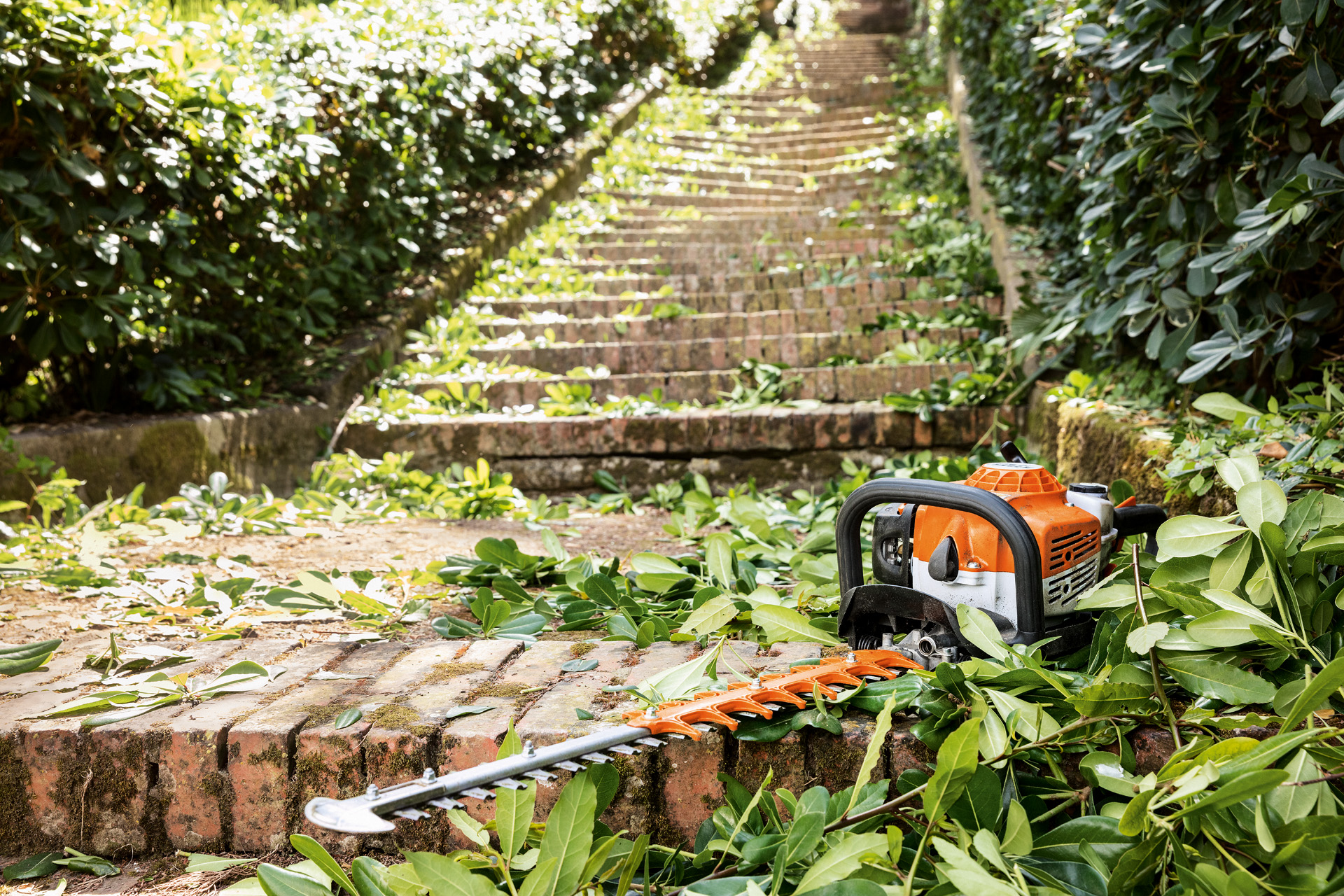How to use a shredder for more efficiency in the garden
You can’t maintain a garden without creating some waste. Use a garden shredder or chipper to make it easier to dispose of plant waste or boost your compost.
11.07.2023

Shredding makes garden waste useful
Grass clippings, tree prunings, wilted flowers, hedge trimmings – the more you tend your garden, the more waste you have to deal with. A garden shredder not only reduces the volume of waste, it can even help to turn green matter into valuable compost and mulch.
Benefits of shredding
- A shredder makes plant matter more compact, and it's an effective way to deal with bulky branches, bushy twigs and other garden offcuts.
- It massively reduces the volume of cuttings and makes them convenient to dispose of.
- Shredding is extremely efficient and sustainable as you can use the results as mulch or compost.
- A shredder unlocks valuable resources from your rubbish: composted shredded material contains the exact nutrients your soil needs.

What can I put in a garden shredder?
Depending on the type of shredder you have, it will be able to handle hard or soft types of material from your garden. Hard matter includes branches, twigs and hedge cuttings, while soft matter refers to leaves, lawn clippings and greenery. Fruit and vegetable waste should not go into the shredder as it contains acids that can cause damage.
How to make use of a shredder in your garden
If your garden waste bin is always full, you should think about using a shredder. It makes quick, effortless work of chopping up organic matter from the garden, saving space and making it easier to handle. There are a few tips that are worth knowing when you use a garden shredder.
Your shredder will happily deal with trimmings from shrubs and hedges, but take care not to harm the long-term health of the plant when you prune it.
- Start by removing protruding shoots.
- Try to make sure that the cut surfaces are as small as possible.
- Always work with a sharp blade – this will help the cuts heal better.
Don’t throw thick pieces of wood or branches straight into your shredder.
- Use pruning shears to cut long pieces of wood into smaller pieces.
- Processing large and heavy chunks by hand means the shredder will work better and more consistently.
- Put the shredder on a firm, level surface and make sure it cannot tip over.
- Never force anything into the machine.
- Keep hold of the end of longer branches as you feed them in.
- Always use protective equipment as specified in the operating instructions (safety glasses, ear protection, gloves and sturdy shoes) and note the warnings in the operating instructions.
With most shredders, you simply feed garden waste into the top.
- If the shredded matter is too coarse for your intended use after the first go, just put it through the shredder again.
- Make sure you only load your shredder with material that is dry and not too dirty. This avoids contaminating your shredder and prevents the blades from becoming prematurely blunt.
HOW TO CHOOSE A GARDEN SHREDDER
Think about how you will use your shredder when deciding which one will best meet your needs.
Type and amount of waste
If you shred a lot of wood, you’ll need a large, high-performance garden shredder. If you plan to use it for softer hedge trimmings and leaves, you can choose something smaller.
The ratio of mixed and hard shredded material plays a role here. If you only process hard shredded material such as woody hedge cuttings, branches and twigs, the STIHL GHE 150 electric garden shredder is a good choice. If an approximately equal amount of mixed shredded material in the form of leaves, thin branches and flower cuttings is also produced, the GHE 355 electric garden shredder can process both well. The STIHL GH 460 petrol shredder is well suited for very large quantities of hard and mixed shredded material.
Noise levels
An electric shredder is generally best for home gardens as it will be less noisy than a petrol shredder. Nonetheless, you should be considerate of neighbours and avoid shredding early in the morning or late at night.
Power connection
If you plan to use an electric shredder, make sure you have a suitable power socket available. If you don’t, a petrol-powered garden shredder is a good alternative.

The right shredder for every garden

Sustainability is extremely important to us.
With a STIHL garden shredder, you can transform hard and soft cuttings from trees, shrubs and other plants into valuable mulch or compost in no time.
Use a shredder for a sustainable approach
A shredder won’t just save you time, money and effort; it also makes it easy to gain extra benefits for your garden. Shredded material is quicker to compost, which means it can be used as a wonderful mulch, soil conditioner or fertiliser. So you can use a shredder to support a rewarding natural cycle in your garden and minimise waste.
Disposing of shredded waste
If you can’t compost your shredded waste or make use of it elsewhere, you can put it in your garden bin, where it will take up a lot less space than unshredded matter. If you still have too much to get rid of, find out about local disposal facilities.
Use shredded waste for pathways
Shredded bark creates a great substitute for gravel on pathways. Make sure you use enough and tamp it down firmly, so your path is less susceptible to weeds.
Shredded waste for your flowerbeds
Your shredder also makes a great mulch for your flowerbeds, where it can protect the soil from frost and moisture loss and will eventually break down to feed your plants. Just cover the earth with a layer of shredded material that is a few centimetres thick. However, you shouldn’t use it here if your shredder has been processing a lot of wood, as this can make the soil acidic.
Use a shredder to make compost and natural fertilisers
Your shredder supports eco-friendly composting. Simply throw the shredded waste into your compost bin or on your compost heap, and it will soon break down into valuable organic fertilisers.
Summary: how to use a garden shredder
- Shredding helps you manage your garden waste.
- You can shred both soft and hard matter.
- Wear the personal protective equipment specified in the operating instructions before operating the machine.
- Shredded waste can be used as a path covering, or to make compost or fertiliser.



